What To Know When It's Time To Replace Your Air Conditioning Unit
 23 June 2020
23 June 2020 
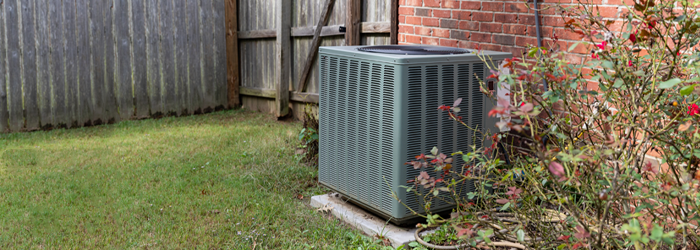
A/C Units & Duct Work: Warning Signs, Tips, Solutions & More!
Are you wondering if your air conditioner unit is running efficiently or if it might be time to replace your A/C altogether? Andrew Dobbins, of Rosie Certified Intelligent Design Air Conditioning and Heating, offers some sage advice! Dobbins says, "the most important thing that homeowners can do, when it comes to air conditioning, is to focus on the things that cost you the least and save the most."
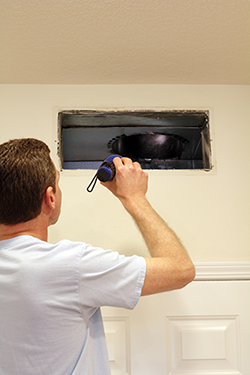
Duct Work Matters
Start by having your duct work inspected. Dobbins says, "93% of ducts have leakage of up to 30 or 40%. Leakage on this scale can bump your energy bill as much as 50%."
Historically, metal duct work was not installed properly as the duct joints were not sealed. Long runs of metal ductwork are connected with a joint and those unsealed joints leak air. Newer homes have ductwork that is made of flex tube. Many times, the joints in this material are not sealed properly either.
A good A/C tech can fix this problem by using, a non- toxic, water-based sealer that is pumped into the duct work while it is pressurized.
When It Is Time To Purchase A New Unit?
Most A/C techs will tell you to expect your unit to last 10-12 years. How long it performs well will depend on how the unit has been maintained. Yearly service and monthly filter changes will keep it working at its best, longer.
It is important to have a relationship with a trusted A/C company. They will be able to assess your unit and let you know what to expect. They will also be able to advise you on the newest technology as well as the most reliable brands when it does come time to replace.
Questions To Consider Before Buying A New A/C Unit:
1 | How Important Are SEER Ratings?
SEER Ratings are important as they are an indicator of a unit's efficiency. An Energy Star HVAC will have a Seasonal Energy Efficiency Ratio ranging from 14 to 21. This number measures energy efficiency, similar to "miles per gallon" for a car. The higher the SEER, the more efficient and the less costly it will be to operate. A unit with a mid-range SEER will provide the best return on investment.
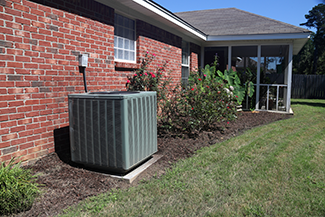 Consider the level of energy efficiency that's important to you, and whether you can afford to invest in both a new air conditioner and new or modified duct work. If you need to have both of these items updated at the same time, it could be better to put in a less efficient 14 SEER unit and fix your duct work than to buy a 19 SEER A/C and lose the extra efficiency through bad ducts.
Consider the level of energy efficiency that's important to you, and whether you can afford to invest in both a new air conditioner and new or modified duct work. If you need to have both of these items updated at the same time, it could be better to put in a less efficient 14 SEER unit and fix your duct work than to buy a 19 SEER A/C and lose the extra efficiency through bad ducts.
Be sure to consult with a trusted air conditioning professional before you select your new A/C system.
2 | Is A Bigger A/C Better?
Bigger is NOT necessarily better. Your contractor should perform a heat-load calculation before deciding what size air conditioner you need. That calculation should consider the size, shape and orientation of your house, insulation, window area, air infiltration, climate, number of residents in the house and their comfort preferences. This heat load calculation is called a "Manual J" calculation. Ask to see the results for your specific home prior to having a unit size determined.
3 | Buyer Beware
Buyer beware if a contractor suggests going with a bigger unit, especially if they try to sell you a larger unit to resolve warm areas in your home. Uneven air flow and warm areas cannot be solved by increasing the capacity of your air conditioner. With the improved efficiencies of A/C units, it is more likely that you will be able to downsize your unit, possibly as much as half a ton. You may want to get a Whole Home Energy Audit first, in order to determine the week spots in your home where you lose the most energy – then tackle the worst offenders first.
NOTE: An oversized A/C stops and starts more often; that costs more kilowatt hours and puts increased wear on your equipment. Over-sized air conditioners do not run long enough to dehumidify the air. A smaller unit will run longer and perform more efficiently. It's the equivalent of an economy car running on cruise control on the open highway or a large pickup truck in stop and go city traffic.
Consider New Technology!
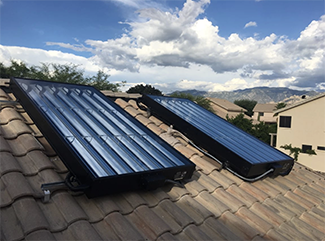
Dobbins introduced us to a new technology, developed right here in Tempe, Arizona! SunTrac Climate Systems is a thermal hybrid air conditioning system. It is a renewable energy method of adding pressure and heat to the refrigeration cycle which results in a decreased/displaced compressor workload, saving energy.
There are 2 ways that residential homeowners can experience this technology at their home.
- First, is the SunTrac Solar Thermal Panel System. SunTrac solar panels can be added to any high-performance A/C with variable speed or 2 stage motors.
- Second, is the SunTrac Thermal Hybrid air conditioning system which is an A/C and solar panel(s) unit in one.
How Does The SunTrac System Work?
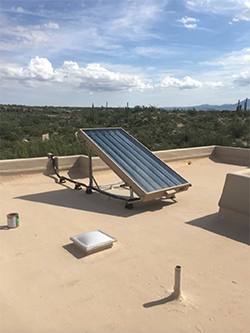
In this technology, solar panel(s) supply supplemental heat to help your air conditioner work more efficiently.
"Supplemental heat and air conditioning? This combo is not as contradictory as it sounds", says Rosie, "here is the story or explanation as simple as I can make it:"
A Day in the Life of a Compressor
The most expensive and hardest working component of an A/C system is the compressor. The compressor consumes the majority of the electricity your A/C uses. So, if we can make the compressors job easier, it will pay big dividends.
The compressors job is to compress the freon (the cooling agent of your AC unit). This greatly increases the temperature of the freon. The highly compressed, hot freon is then cycled into the condensing coil where it is allowed to decompress. During this step the freon cools to 46 degrees. At this point the freon is used to cool the air that gets delivered to the inside of your home and the cycle of compressing and decompressing begins again.
The Sun Trac system uses a solar panel with 6 parabolic mirrored troughs to capture the free energy of the sun and heat the freon and deliver it to the compressor. The more heated and compressed freon that we can deliver to the compressor, the less work the compressor has to do.
Rich Cooley, CEO of SunTrac, sums it up for us: "The problem has been that warmer climates require the compressor to operate in the high-power stage much of the time when the cost of energy is the highest. Using a solar compressor to compress the freon allows the A/C compressor to operate in low-power mode while delivering full-load cooling, thus reducing power usage by 40% or more annually."
The benefits of this technology are many including:
- The compressor doesn't have to work as hard, reducing your utility bill
- The life of your unit is extended
- Your home will reduce some of the stress off of the electric grid.
Discover the Benefits of SunTrac Air Conditioning Systems
This sleek, sun-powered system helps your current or new air conditioner work more efficiently, but doesn't require the same large footprint as a traditional solar panel setup. Learn more about SunTrac and the benefits it can offer your home with Andrew from Intelligent Design, an exclusive SunTrac installer in Southern Arizona.
Podcast
Andrew Dobbins of Intelligent Design in Tucson and Rich Cooley of Suntrac Hybrid Climate Systems explains this game changer in saving energy and substantial money on your cooling bill! The SunTrac thermal hybrid air conditioning system is a renewable energy method of adding pressure and heat to the refrigeration cycle which results in a decreased/displaced compressor workload. This is something worth listening too!!
###
About Intelligent Design Air Conditioning
 Intelligent Design is a veteran-owned and operated business based in Tucson. Currently holding the highest customer rated position for Air Conditioning companies in Tucson, they specialize in: residential system repair and replacement, indoor air quality solutions, custom duct repair and design, custom homes and commercial service and replacement.
Intelligent Design is a veteran-owned and operated business based in Tucson. Currently holding the highest customer rated position for Air Conditioning companies in Tucson, they specialize in: residential system repair and replacement, indoor air quality solutions, custom duct repair and design, custom homes and commercial service and replacement.
Photo Credits:
- SunTrac
- Shutterstock
related content
- DIY FAQ: What Are Rosie's Top 10 Energy Saving Tips
- DIY FAQ: Super Cooling
- DIY FAQ: Does A Dust Storm Affect My Indoor Air Or Harm My Air Conditioning System
- DIY FAQ: Picking Your Power Plan
- DIY FAQ: How Can I Keep From Getting Duped When It Comes To Buying Energy Saving Products?
- DIY FAQ: What Can I Expect When I Get A Home Performance Energy Audit?
- DIY FAQ: Rosie's Consumer Guide For Buying A Home AC System
- Podcast: What To Know When It's Time To Replace Your Air Conditioning Unit
Print this page
recent post
- Duck, Duck, Duct! How Often Should Ductwork Be Cleaned?
- Vinyl vs. Fiberglass Windows: Which Is The Better Choice Of Replacement Window?
- We May Be The Grand Canyon State, But The Rocky Mountains Are Important For Arizona
- Welcome to Arizona! Things A Newbie to Arizona Should Know
- The Pros & Cons of Buying A Flipped House
- Getting In On The Ground Floor
- Why It’s More Critical Than Ever To Get Your AC Serviced Before Summer
- The Reality of Remodeling
- What To Look For When Comparing Your Roofing Quotes
- What To Expect When Buying New Windows & Doors
